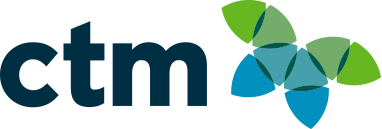

Behind the scenes in Travel Risk Management (TRM): A Riskline interview
Ever wondered what goes on behind the scenes of a travel risk management platform? Who decides what constitutes a ‘risk’? How are risks identified, verified and categorised? How are they channeled to the relevant travellers in a timely and reliable manner?
We sat down with Riskline founder and CEO, Kennet Nordlien, to discuss the processes behind the risks we receive, how to measure an ROI on travel risk management, which events and technologies are transforming the travel risk management landscape, and the steps your business can take to ensure a robust and reliable duty of care framework for your employees and travellers.
Q. How many alerts does Riskline communicate every year? Is this growing? If so, why?
A. Through our strategic partnerships, we serve 10+ million travellers annually. On average we issue between 20,000 – 21,000 alerts annually. However, YTD for 2020 we have issued over 24,000 alerts (as of 15 October). Without a doubt, this increase was due to the COVID-19 pandemic and the extraordinary travel measures and restrictions implemented by countries around the world. The majority of alerts we publish are proactive, and communicate upcoming safety and travel disruption intelligence pertaining to upcoming protests, transport or labour strikes, extreme weather events, and of course, new COVID-19 measures.
Q. What tools and technologies do you use to monitor and verify risk events globally?
A. We work as a geographically distributed team. Today we operate in over 15 countries and across 11 different time zones. Our analysts monitor hundreds of thousands of open source intelligence (OSINT) 24/7/365 to make accurate and timely assessments of travel and public safety risks. We employ several tools to aid our analysts in finding the right information at the right time, including Riskline Monitor: our custom-built aggregator tool for finding the most important travel and security news and information, which allows us to monitor developments in multiple languages and adjust parameters for the latest crisis; AI Monitor: a third-party artificial intelligence platform to uncover breaking news faster than any human could.
Q. How are risks categorised?
A. All Riskline Alerts and Notices are assigned one of seven categories:
- Political Developments
- Conflict & Terrorism
- Demonstrations & Unrest
- Crime & Corruption
- Natural & Environmental
- Health & Medical
- Travel Safety & Disruptions.
The category is selected based on the root cause, motivation or, in some cases, the outcome of the reported event.

Q. What accuracy and timeliness measures are in place?
A. All our analysts complete internal and third-party OSINT training programs, which include instruction on media and event verification, especially for user-generated content (UGC). We ensure information is verified by several sources and that each Alert is reviewed by a second, and more senior analyst. While our verification process involves multiple steps, we typically publish Alerts in less than 10 minutes from our analysts first being notified of an incident taking place.
Q. What changes have you seen in business demand for formal travel risk management tools in the past 5 years?
A. Duty of Care has become increasingly important over the past 5 years, evolving from a ‘nice to have’ add-on to an essential part of any travel program. The 2015 Paris Attacks and subsequent terrorist incidents and unprecedented political events like the 2016 Turkish coup attempt were definite catalysts for businesses to demand TRM systems. During this time, TRM tools have transitioned from living solely in security operation centres to a conventional piece of office technology used to oversee travellers and personnel. Demand for traveller tracking and apps that allow for two-way communication have also recently increased.
Q. What are the typical triggers for businesses when choosing to implement a formal TRM solution / tool?
A. Once a business has faced significant disruption and/or financial impact due to something going wrong within their travel program, they will quickly want to adopt a TRM solution to ensure it doesn’t happen again. For many businesses, this may have been the wave of terror events in Europe during 2015-2017, and for others the COVID-19 pandemic has triggered this more recently.

Q. What are the key considerations for businesses when looking to implement a formal travel risk management solution?
A. Take the time to review your existing travel program, any risk assessments and travel and expense analytics. Not every business will need a highly robust, end-to-end travel risk management solution that covers the globe, while others will require more entry-level basics. Cost consideration will often be tied into this; however, budget solutions do exist for small and mid-market organisations.
Seek out solutions that cover not only your travellers, but all your employees. The pandemic has had a fundamental change on business operations, and you will want to meet your Duty of Care obligations for your remote working staff as well as those travelling short distances. Be aware that your solution must be inclusive of your diverse workforce – not all employees are the same and neither is their risk profile. Your risk management solution should meet the need to be accessibly friendly and serve your female, LGBTQ+ and BIPOC staff.
Ensure your risk management solution is fully integrated across all travel operation processes, including approval and compliance, and confirm that your employees are fully aware of the policies.
Q. How can businesses best quantify an ROI on their investment in 3rd party risk management tools?
A. It can be best quantified a few key ways:
- Response time: how quickly was an incident picked up and responded to?
- Usage: how many employers are using the tool? If no one is using it, what’s the point in paying for it?
- Accessibility: how easy is it for an employee to access the tool? For example, is it mobile-friendly, and is it user-friendly and easy to understand?
- Reliability and accuracy: Is the tool reliable and can the information be trusted?

Q. What are the potential risks / costs for businesses that do not adopt a formal travel risk management solution?
A. Duty of Care isn’t solely a moral obligation. Some may forget that it’s also a legal requirement and can come with far-reaching legal ramifications. At the high-stakes end, consider the financial costs of needing a spur-of-the-moment process to extract personnel from a life-threatening situation. Or the smaller expenses that financially add up when trips are disrupted by routine, and often avoidable, events like adverse weather or transport strikes that come with pre-planning notice. Over time businesses may even lose qualified personnel because of the lack of support. We’ve seen time and time again that business travellers expect their employer to provide pre-trip briefings and during-trip support to them.
Q. What are the most effective ways for travel managers and business travellers to consume risk information?
A. To be forewarned is forearmed. It’s essential for travel managers and business travellers to have immediate access to pre-trip intelligence like pre-travel advisories, upcoming notices of events and more granular city risk reports. However, we can’t forget the importance of having in-trip intelligence as well; most travellers are exposed to the greatest amount of risk during their trip. The fast-changing regulatory environment of the COVID-19 pandemic has also shown us that travel managers and travellers need to have the right information available to them even before the trip has booked – during the ‘search’ phase.
Q. What is the difference between Riskline Country Risk Levels and a Government’s risk / safety alert service?
A. The methodology behind our Risk Level assessment is based on best practices from internationally recognised risk management procedures. When assessing risk, our analysts take into consideration the actual or potential impact of the threat or hazard they are reporting as well as the likelihood of that threat or hazard taking place, if it has not already. We assess several key components – including the political stability of the country, terrorism, unrest, crime levels, environmental and health concerns as well as threats to personal safety – when establishing the overall Country Risk Level. Our Country Risk Levels can be used by any organisation with an international outlook. On the other hand, a Government’s own risk advisories are used to communicate safety and security concerns to their own citizens. In some cases, there can be political and/or economic motives behind their advisories warning against travel. Some governments use 3, 4, or 5 risk level ratings that do not always leave room for nuance. Governments can also advise their own citizens differently, leading to more confusion.

Q. How did COVID-19 change the travel risk management landscape?
A. We have seen disruptions to international travel before but nothing like this prolonged crisis. Suddenly focused shifted from traditional travel risks to trying to navigate a slew of new travel restrictions and measures put in place in response to the pandemic. The world may have temporarily stopped travelling, but the demand for access to immediate travel risk intelligence only increased.
What we noticed were shifting priorities, with travel/security managers and HR personnel tasked with supporting the mobility of their workforce from home. A greater emphasis has now been placed on preparedness, pre-trip planning, health assessments, and assistance. Duty of Care is no longer a ‘nice to have’ addition, but crucial to a successful business travel program – and intelligence is its backbone.
As domestic and regional travel briefly resumed over the summer months, we saw the importance of granular, localised risk intelligence to any travel program. Country-level risk data is no longer enough to make critical decisions – with local governments mandating their own COVID-19 restrictions, managers and travellers need to know what is happening at the state, city and even neighbourhood level.
Traveller tracking has also now become increasingly the norm. For years business travel managers have known that travellers are not always where their PNR or itinerary says they are and locating travellers during the height of the pandemic proved difficult for many corporations. Location-based monitoring of staff by GPS tracking devices and other apps will likely give peace of mind to both the manager and employee.
Q. What new technologies / features are being developed in relation to COVID-19 to support safer travel?
A. Better tracking, communication and trip monitoring technology. We see this already with the development of new track and trace applications.
Q. How do you believe clients will be consuming risk data in the coming 5 years?
A. In short, everywhere and more easily. I can foresee Duty of Care becoming regulated and mandated by governments, becoming as much as a basic requirement as insurance. There will be no difference between a traveller and in-office or remote-based staff, as all will be entitled to know what is happening around them, from demonstrations and strikes to incidents of crime and dangerous weather conditions. Risk data will be leveraged and integrated into more tools than before.
About Riskline
Riskline is a world-class travel risk intelligence company. We provide real-time alert messaging, pre-travel advisories, country and city risk assessments and COVID-19 intelligence to fulfill duty of care requirements before and during travel, through a web portal and APIs. Trusted by global travel management, SaaS, and GDS companies, SMEs and everyone in between, we build reliable travel risk solutions tailored to specific needs. In business since 2007, Riskline is a privately owned company operating 24/7 with a geographically-distributed team in more than 15 countries and across 11 different time zones.
About Kennet Nordlien, founder and CEO of Riskline
Kennent Nordlien has over 20 years of management and entrepreneurship experience within the security sector. As a visionary consultant, he gained a deep knowledge of the travel industry and collaborated with some of the largest organizations in Europe prior to founding Riskline in 2007. Kennet has played a vital role in making Riskline into the world-class travel risk intelligence company it is today.
Enjoyed reading insights from CTM’s Riskline Interview?
Contact CTM today to request a demo of our travel risk management tools.

